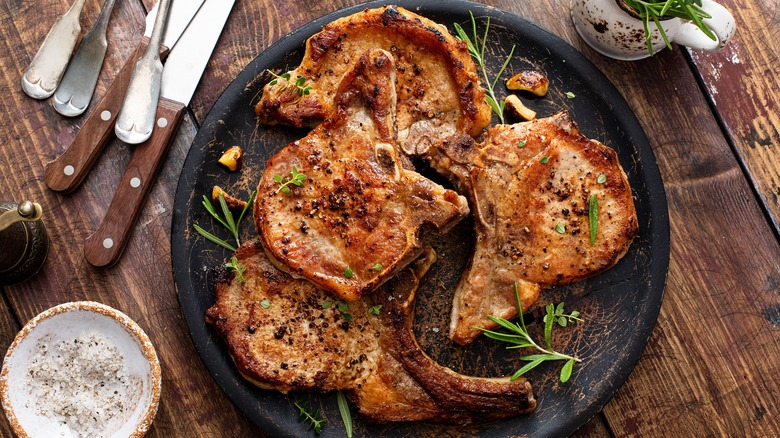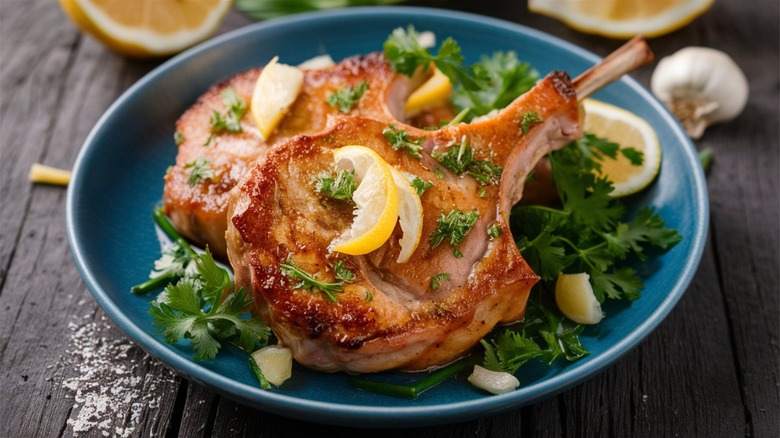The 2-Step Cooking Method To Prevent Dry Pork Chops
Pork chops may be one of the most challenging meats to keep moist during the cooking process. Due to its lower fat content and the fact that it's cut thicker than, say, a pork cutlet, it's all too prone to drying out or cooking unevenly. However, Rich Parente, chef and owner of Clock Tower Grill in Brewster, New York, gave us his expert tip for making tender, juicy pork chops, and all it requires is a simple two-step cooking method.
"For a boneless pork chop that's at least a half-inch thick, I would first start it in a frying pan, searing it on both sides to develop good flavor and color," Parente said. "Then, transfer it to a 300 degrees Fahrenheit oven to finish cooking for about 5 to 10 minutes until the pork reaches an internal temperature of 140 degrees Fahrenheit."
Parente then recommends allowing the meat to rest briefly after it's removed from the oven. During that time, the meat should reach the USDA-recommended temperature of 145 degrees or higher. Parente says that the same process should work for half-inch bone-in chops, as well. "The cooking process is more about the thickness of the pork chop than it is about bone in or out," he says. Getting the sear on the outside on the stovetop is the key to creating a good crust without overcooking, while finishing it in the oven is a consistent way to cook the interior.
More tips for moist pork chops
While Rich Parente's two-part cooking technique is a solid way to prevent dry pork chops, there are a few other easy steps you can take to make sure the meat remains moist. Firstly, start with high-quality meat and be sure it's cut to the right thickness — aim for a cut that's between three-quarters of an inch to an inch and a half thick. And when possible, opt for a bone-in chop, which is less likely to dry out.
Another way to achieve juicy pork chops is to allow them to marinate for anywhere between six to 24 hours. Using salt, oil, and acidic ingredients will make the meat tender — just avoid overdoing the salt in your marinade, which can backfire and toughen the meat.
Also, be sure to pull your pork chops out of the fridge to sit out a bit before you're ready to cook. Allowing meat to come closer to room temperature betters your chances of winding up with a perfect chop, since it will be able to heat up evenly. Finally, overcooking is a surefire way to wind up with dried-out chops, so don't leave the doneness up to guesswork. Be sure to use a calibrated food thermometer to monitor when the interior reaches the right temperature. Then, after resting them for a few minutes, simply serve them with your favorite sides and one of the many drinks that pair well with pork.


